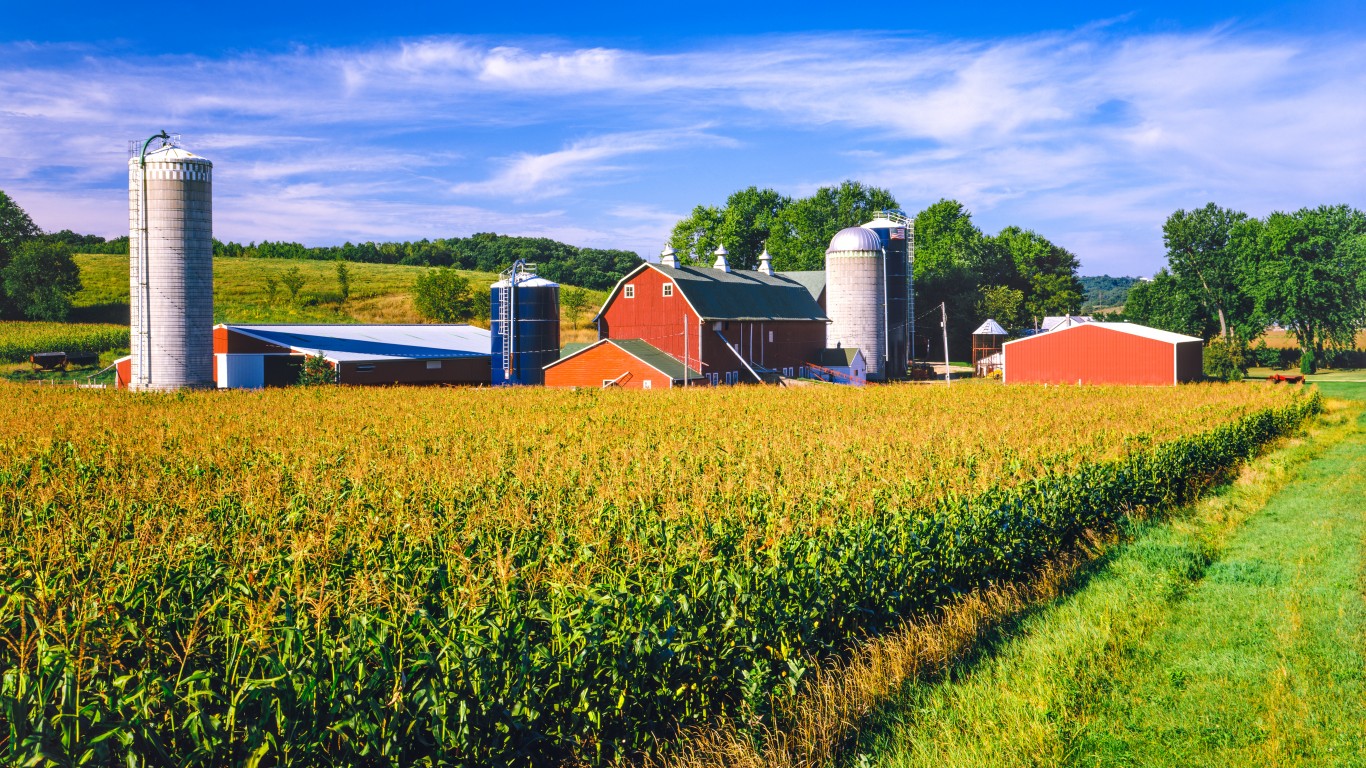

“Eat your veggies!” That mantra has been drilled into Americans since childhood, and most of us are following that sound advice. The Centers for Disease Control and Prevention’s “National Health and Nutrition Examination Survey 2015–2018” revealed 67.3% of adults aged 20 and older said they ate fruit on any given day. For vegetables, the percentage was much higher at 95%. Of course, what one person classifies as a vegetable is flexible. To some, a French fry is a vegetable and a sugary fruit cobbler is healthy because, well, it’s fruit.
Nevertheless, the study suggests a majority of Americans prioritize healthy eating habits. Packed with vitamins and minerals, fruits and vegetables are a staple of a balanced diet. Yet in addition to the nutritional punch these foods provide, we also need to weigh the impact fruits, vegetables, nuts, and other foods have on the environment in terms of water usage and greenhouse gas emissions. You presumably want products good for your health, but also good for the earth. (These are the foods with the worst environmental impact.)
Click here to see foods with a strikingly low impact on the environment
To find the foods with the least environmental impact, 24/7 Wall St. reviewed data from “Reducing food’s environmental impacts through producers and consumers,” a report published by Science magazine in 2018. Researchers covered 43 food products, using data from 2013. Foods are ranked by greenhouse gas emissions (GHG) in kilograms of carbon dioxide equivalents per kilogram (kg) of food product. In addition, we’ve included GHG emissions per nutritional unit as noted; land use and freshwater withdrawal required to produce 1 kg of product. (These are the 40 countries decreasing emissions the fastest.)
An additional factor to consider when picking food products is pesticide use. To prevent pest infestations, fruits and vegetables are often sprayed with chemicals. Whenever possible, go with organic, or in the case of apples, “low-spray” fruit, grown with less harmful agents.
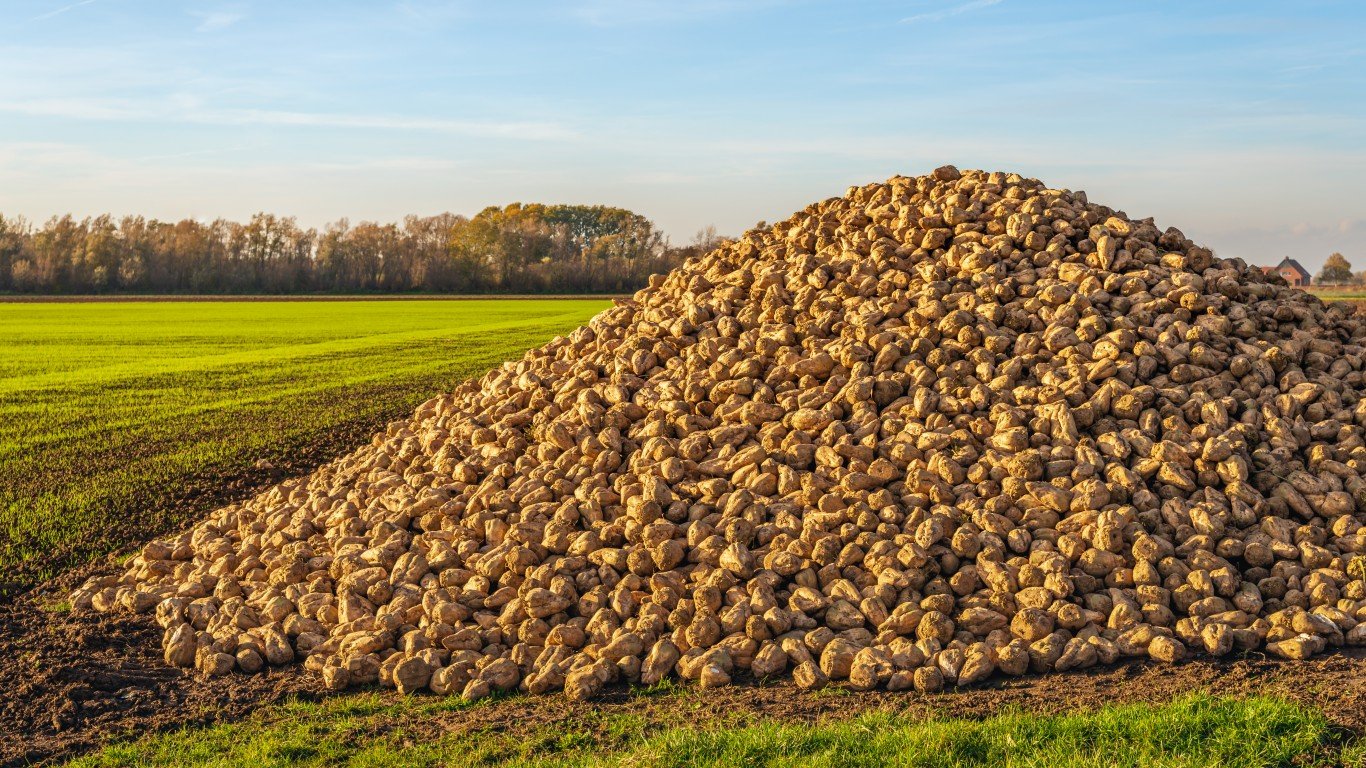
20. Beet Sugar
> GHG emissions in kg of CO2 equivalents per kg of food: 1.8
> GHG emissions in kg of CO2 equivalents per nutritional unit: 1.8 per 1 kg (20 highest)
> Land use in sq meters per kg of food: 1.8 (7th lowest)
> Freshwater withdrawal in liters per kg of food: 217.7 (18 lowest)
Beet sugar and sugar from sugarcane sweetens many food products. Although both are identical chemically as sucrose, beet sugar and sugarcane sugar go through different refining processes. To obtain the sucrose, the beets are thinly sliced and juiced. Sugarcane sugar is processed with bone char, which is removed from the final product – an important distinction for vegans.
[in-text-ad]

19. Wine
> GHG emissions in kg of CO2 equivalents per kg of food: 1.8
> GHG emissions in kg of CO2 equivalents per nutritional unit: 0.1 per 1 unit (10 ml alcohol) (1 lowest)
> Land use in sq meters per kg of food: 1.8 (10th lowest)
> Freshwater withdrawal in liters per kg of food: 78.9 (9 lowest)
To make a great wine, all you need to do is pick the grapes, let them ferment, and bottle the final product. Easy right? Well, knowing when to harvest the grapes, aging the vintage for a great taste, and bottling the wine in the right container all take the knowledge and skill of an experienced winemaker. Today, winemakers have to contend with not only the delicate art of making a wine, but with climate change that is causing droughts and wildfires and changing which grape varieties can be grown where.
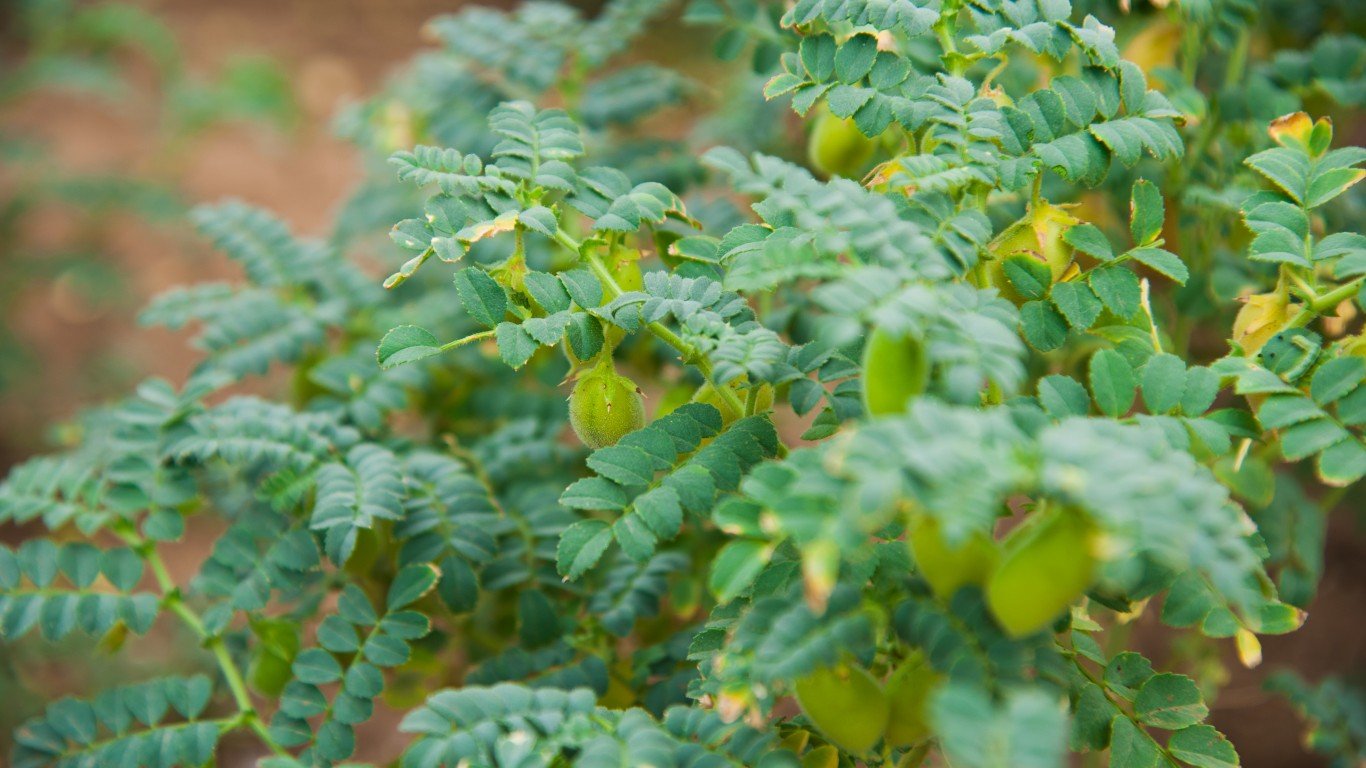
18. Other Pulses
> GHG emissions in kg of CO2 equivalents per kg of food: 1.8
> GHG emissions in kg of CO2 equivalents per nutritional unit: 0.8 per 100 g protein (15 lowest)
> Land use in sq meters per kg of food: 15.6 (10th highest)
> Freshwater withdrawal in liters per kg of food: 435.7 (20 highest)
You’ve probably never heard of the term “other pulses” but you no doubt seen some of them in the grocery store. Edible seeds in the legume family, pulses include dry beans, dry peas, and chickpeas, among others. Because growing pulses requires less water than most other crops and decreases greenhouse gasses, pulses are considered a sustainable agricultural crop.
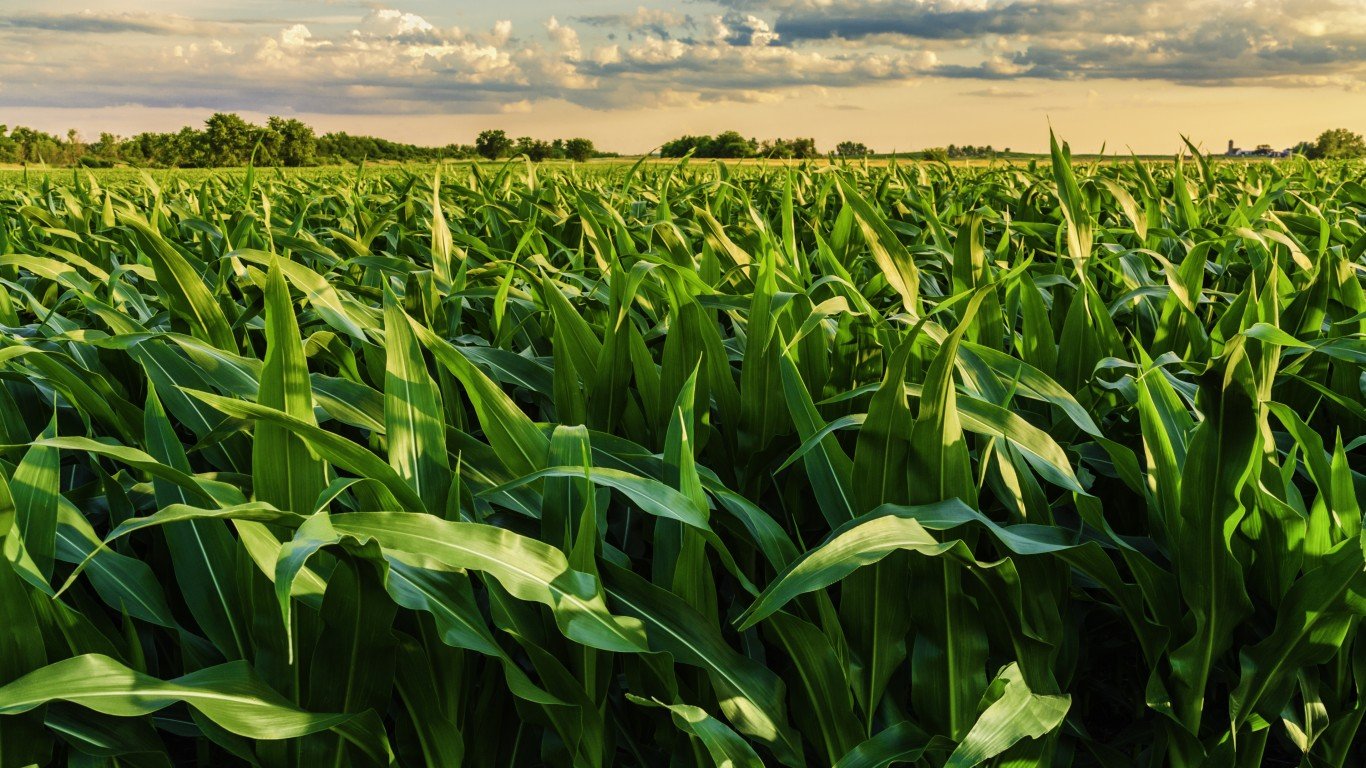
17. Maize (Meal)
> GHG emissions in kg of CO2 equivalents per kg of food: 1.7
> GHG emissions in kg of CO2 equivalents per nutritional unit: 0.4 per 1000 kcal (4 lowest)
> Land use in sq meters per kg of food: 2.9 (12th lowest)
> Freshwater withdrawal in liters per kg of food: 215.7 (17 lowest)
Maize meal is a ground-up version of dried corn kernels, also known as cornmeal, and can be found in a variety of food products. Maize meal is widely used in Southern Africa because it can be stored without refrigeration.
[in-text-ad-2]
16. Wheat & Rye (Bread)
> GHG emissions in kg of CO2 equivalents per kg of food: 1.6
> GHG emissions in kg of CO2 equivalents per nutritional unit: 0.6 per 1000 kcal (13 lowest)
> Land use in sq meters per kg of food: 3.9 (21st highest)
> Freshwater withdrawal in liters per kg of food: 647.5 (14 highest)
Wheat and rye are both cereal grains, but are put to different uses. Wheat is processed into flour for baking. Also used in baking, rye is a staple of animal feed and in whiskey distilling. Their tastes are different, too. Wheat has a neutral flavor, while rye has a sour taste.
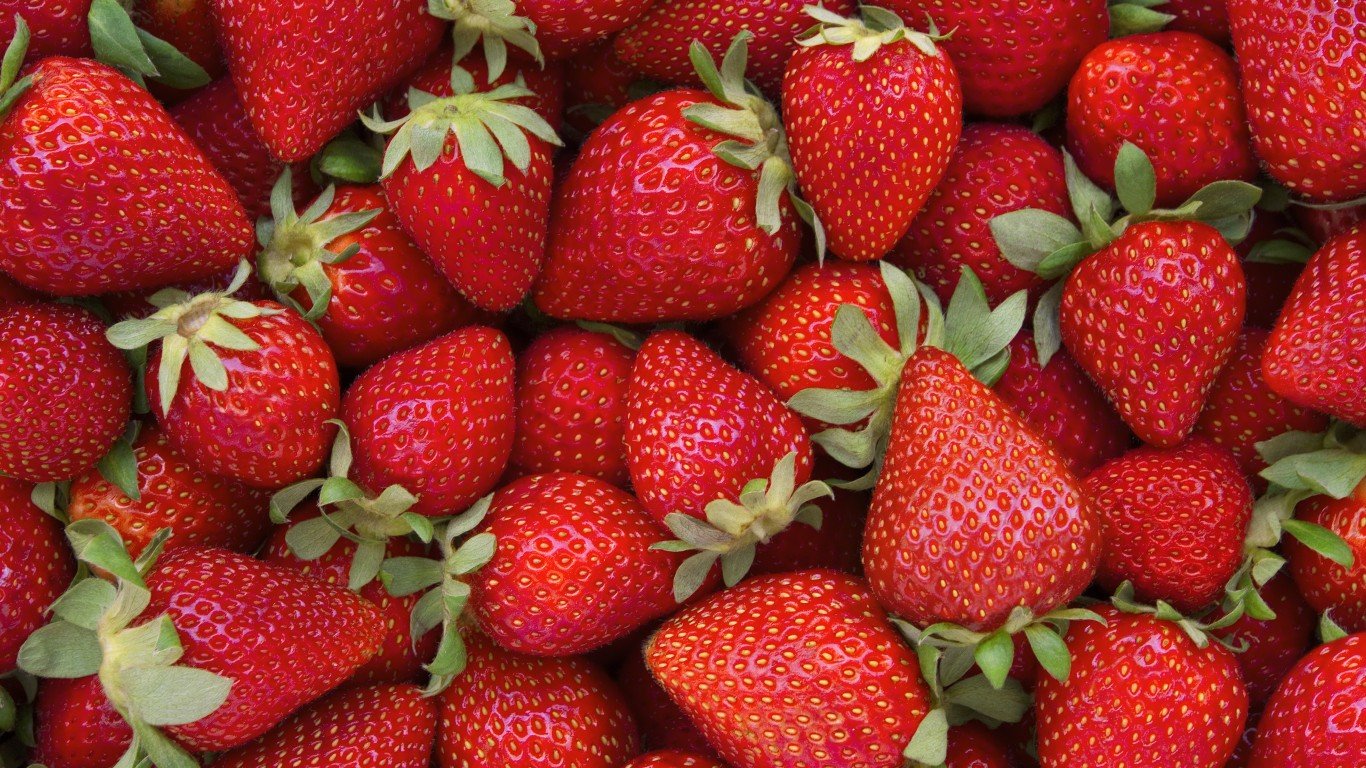
15. Berries & Grapes
> GHG emissions in kg of CO2 equivalents per kg of food: 1.5
> GHG emissions in kg of CO2 equivalents per nutritional unit: 1.5 per 1 kg (21 highest)
> Land use in sq meters per kg of food: 2.4 (21st lowest)
> Freshwater withdrawal in liters per kg of food: 419.6 (21 highest)
You may think of grapes as distinct from berries, but the two fruits are actually both berries. Grapes belong to a family of plants known as Vitaceae; the plants within this family produce berry-like fruits. A berry is defined as a fleshy fruit without a stone produced from a single flower. Where the confusion comes is that some grapes have a hard pit.
[in-text-ad]
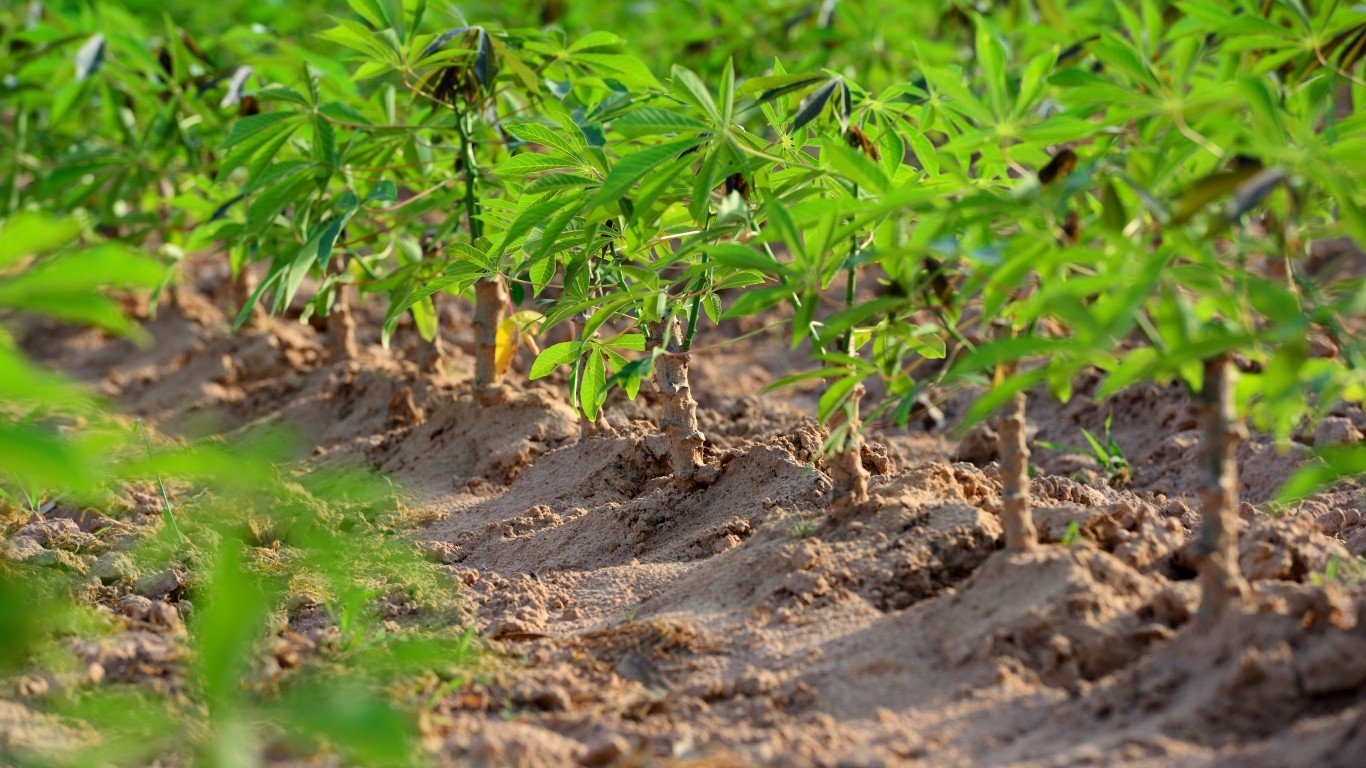
14. Cassava
> GHG emissions in kg of CO2 equivalents per kg of food: 1.3
> GHG emissions in kg of CO2 equivalents per nutritional unit: 1.4 per 1000 kcal (22 lowest)
> Land use in sq meters per kg of food: 1.8 (17th lowest)
> Freshwater withdrawal in liters per kg of food: 0.0 (1 lowest)
If you hated tapioca as a kid, blame cassava. A starchy root vegetable, cassava is consumed in many parts of the world. As a drought-resistant vegetable, it can be grown in harsh conditions. Cassava is high in what is called resistant starch, a type of starch with properties similar to soluble fiber. However, processed cassava products such as tapioca contain less resistant starch.
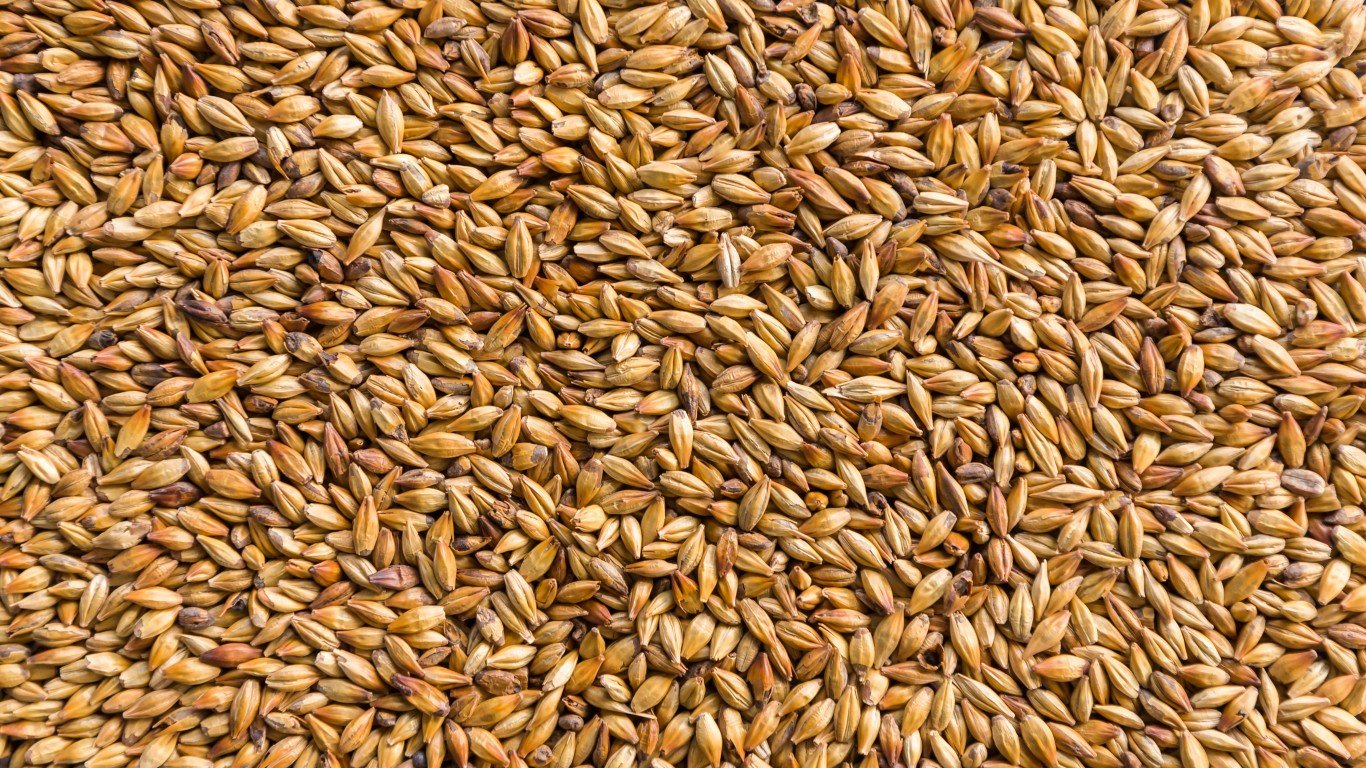
13. Barley (Beer)
> GHG emissions in kg of CO2 equivalents per kg of food: 1.2
> GHG emissions in kg of CO2 equivalents per nutritional unit: 0.2 per 1 unit (10 ml alcohol) (2 lowest)
> Land use in sq meters per kg of food: 1.1 (13th lowest)
> Freshwater withdrawal in liters per kg of food: 17.1 (4 lowest)
Barley is another cereal grain; it’s frequently used for brewing beer and making alcoholic beverages. The grain is also said to lower cholesterol and blood sugar levels. In addition to an ingredient for beer, barley is planted for erosion control. Because its roots burrow deep into the soil, winter barley protects the ground from wind and rain that erode the soil.
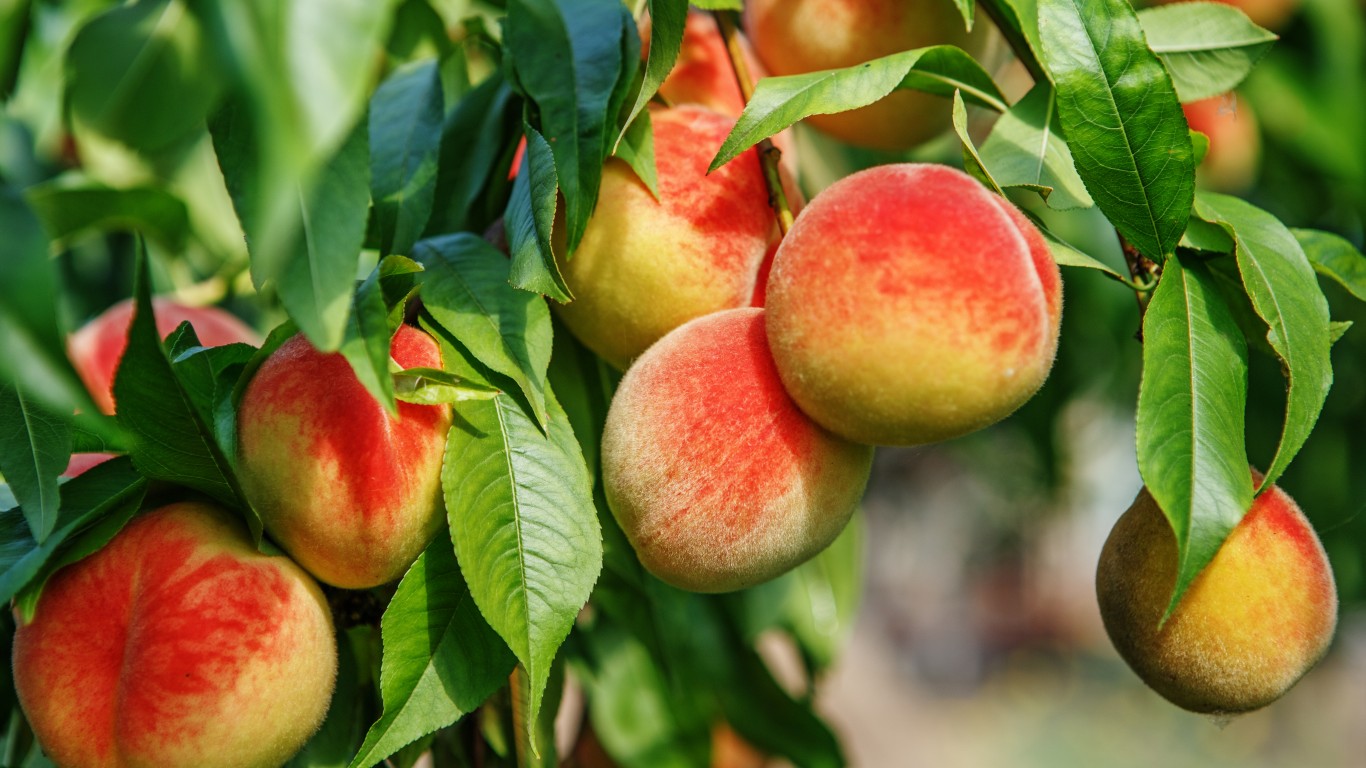
12. Other Fruit
> GHG emissions in kg of CO2 equivalents per kg of food: 1.1
> GHG emissions in kg of CO2 equivalents per nutritional unit: 1.1 per 1 kg (19 lowest)
> Land use in sq meters per kg of food: 0.9 (11th lowest)
> Freshwater withdrawal in liters per kg of food: 153.5 (15 lowest)
Science magazine breaks out citrus fruits, berries (including grapes), apples, and bananas individually and categorizes everything else as “other fruits.” That encompasses everything from familiar ones like peaches, pears, and pineapple to more exotic varieties like dragon fruit (pitaya), prickly pears, and jackfruit.
[in-text-ad-2]
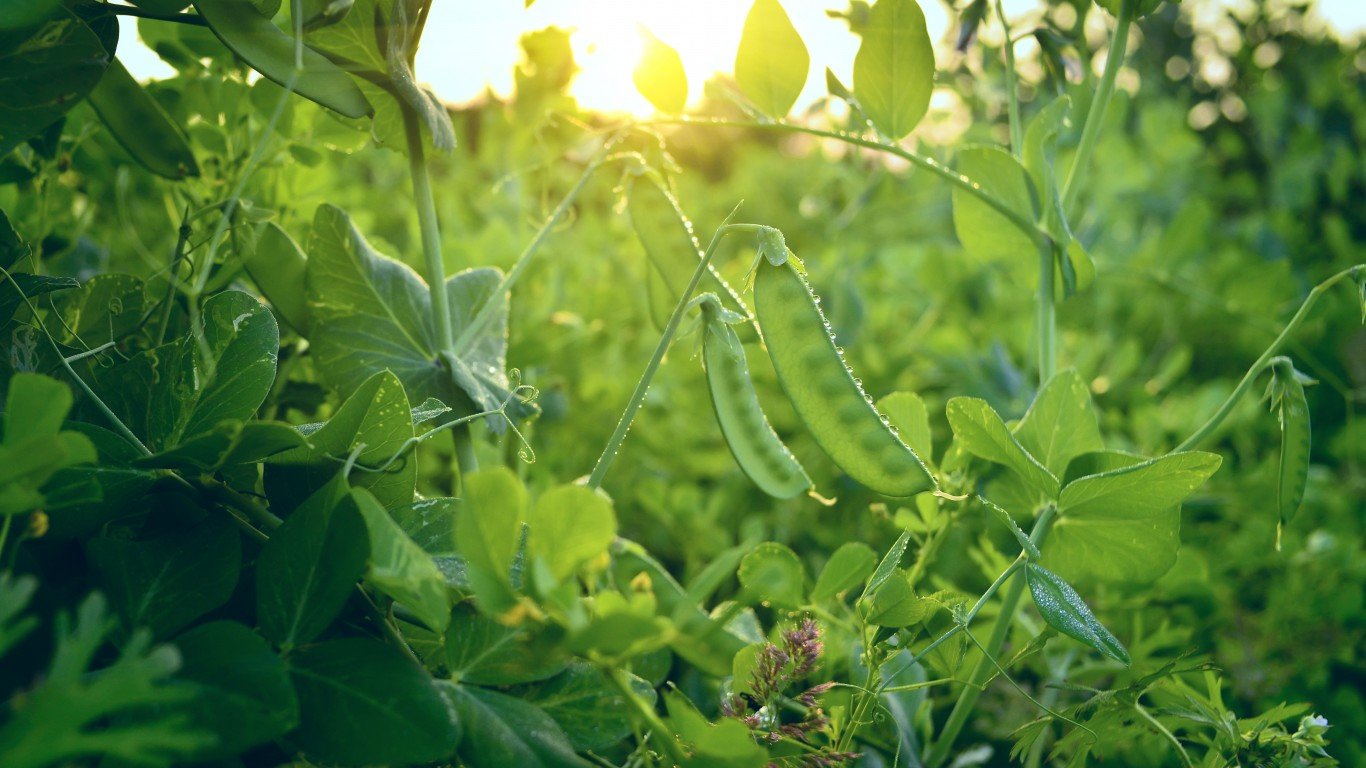
11. Peas
> GHG emissions in kg of CO2 equivalents per kg of food: 1.0
> GHG emissions in kg of CO2 equivalents per nutritional unit: 0.4 per 100 g protein (9 lowest)
> Land use in sq meters per kg of food: 7.5 (19th highest)
> Freshwater withdrawal in liters per kg of food: 396.6 (21 lowest)
A type of legume, peas are native to the Middle East – specifically Turkey and Iraq. Frozen peas are on the Environmental Working Group’s “Clean Fifteen” list, making them a safer choice for those who want to avoid pesticides. The Group also gives fresh peas a “low to moderate pesticide residue score.”
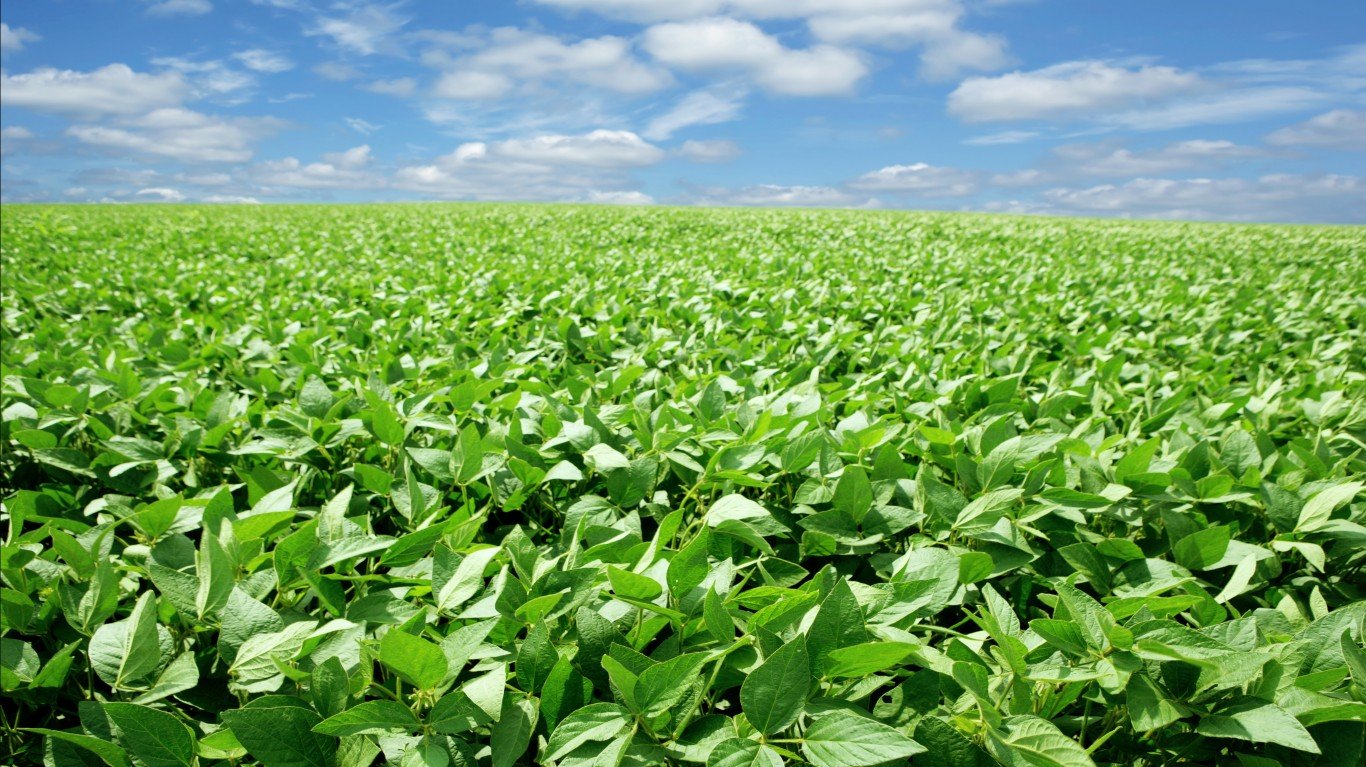
10. Soy Milk
> GHG emissions in kg of CO2 equivalents per kg of food: 1.0
> GHG emissions in kg of CO2 equivalents per nutritional unit: 1.0 per 1 liter of soymilk (~3.3% protein) (18 lowest)
> Land use in sq meters per kg of food: 0.7 (10th lowest)
> Freshwater withdrawal in liters per kg of food: 27.8 (6 lowest)
Looking for a non-daily alternative to cow’s milk? Made from soybeans, the soy milk found on grocery shelves is fortified with vitamins and minerals. U.S. farmers now produce more soy than corn. One glass of soy milk requires 18 gallons of water to produce, compared to 67 gallons for a glass of cow’s milk.
[in-text-ad]
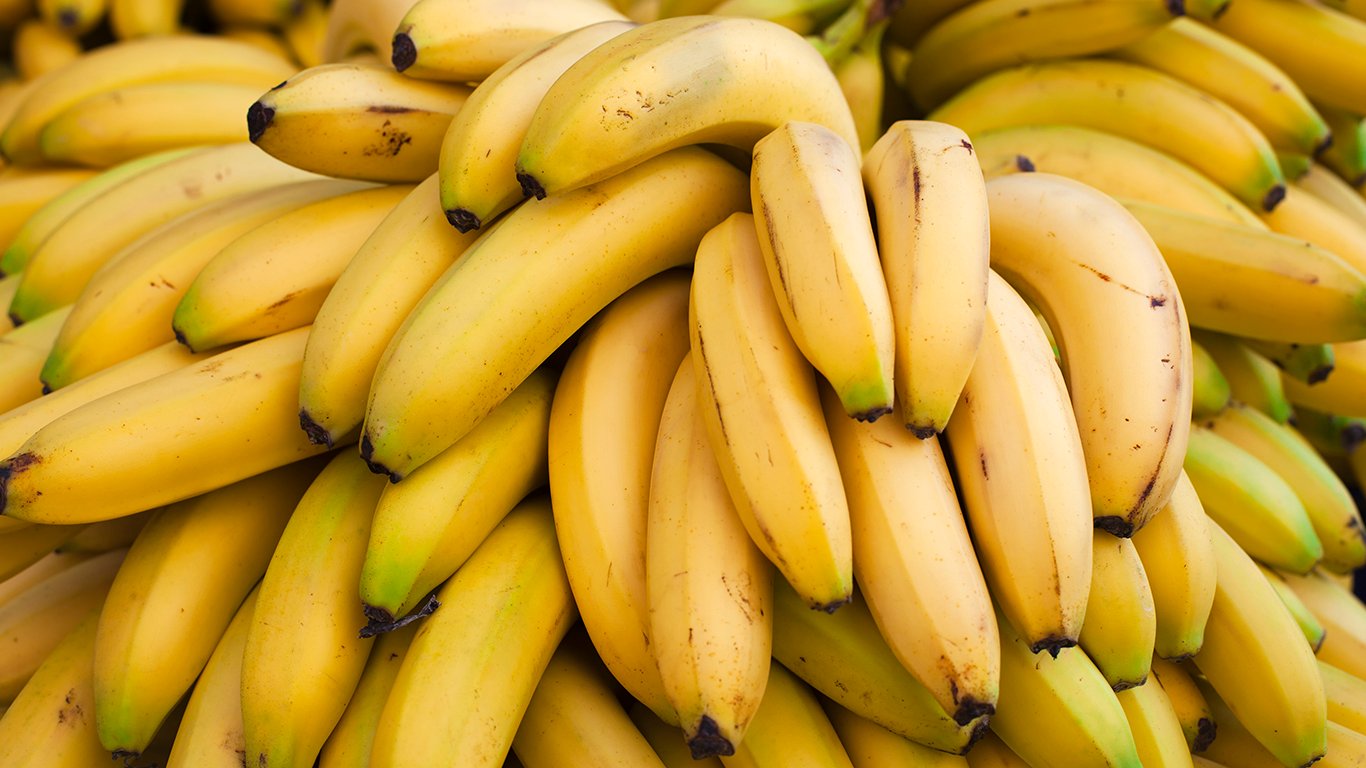
9. Bananas
> GHG emissions in kg of CO2 equivalents per kg of food: 0.9
> GHG emissions in kg of CO2 equivalents per nutritional unit: 0.9 per 1 kg (16 lowest)
> Land use in sq meters per kg of food: 1.9 (19th lowest)
> Freshwater withdrawal in liters per kg of food: 114.5 (12 lowest)
Strangely enough, bananas are actually a berry. Bananas provide a rich source of potassium and pectin, a form of fiber. The fruits are also packed with magnesium and vitamins C and B6. Because of their low carbon footprint, bananas are less harmful to the environment than many other fruits.
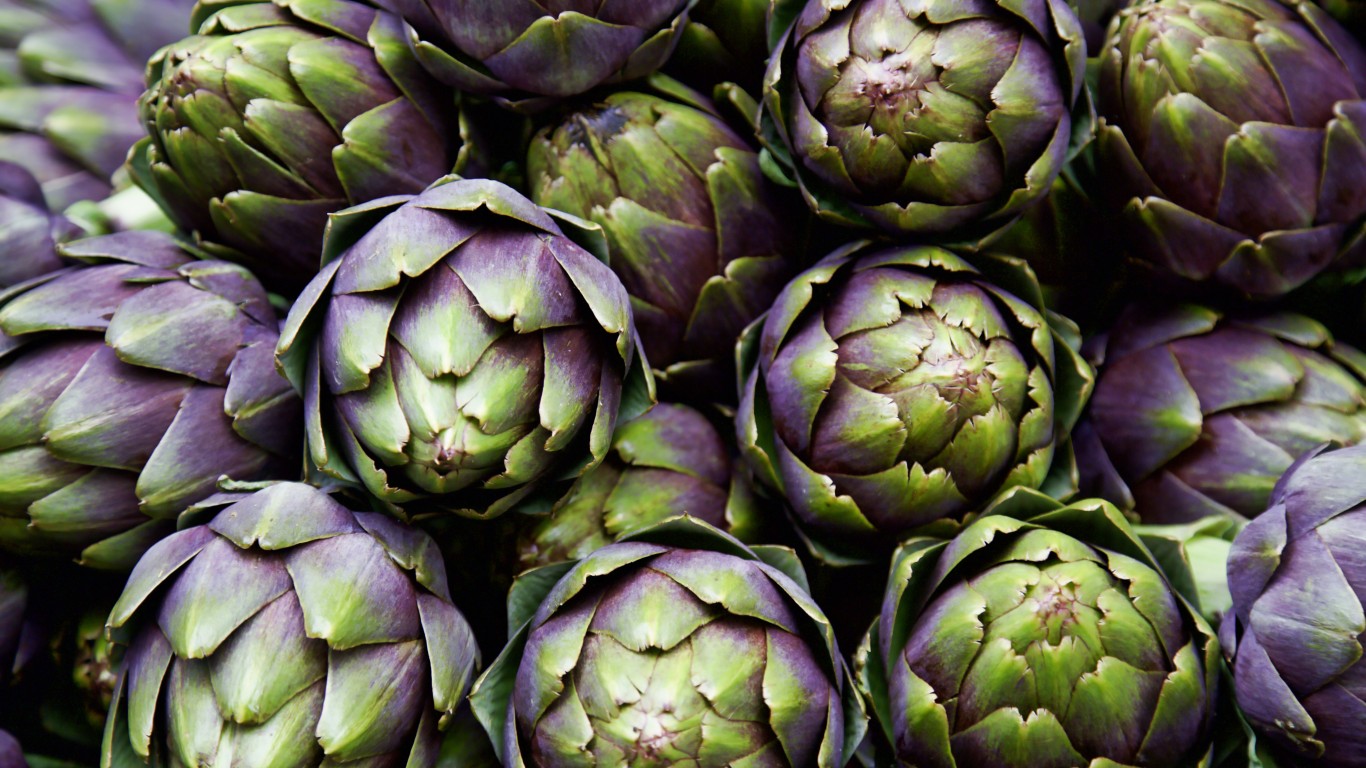
8. Other Vegetables
> GHG emissions in kg of CO2 equivalents per kg of food: 0.5
> GHG emissions in kg of CO2 equivalents per nutritional unit: 0.5 per 1 kg (12 lowest)
> Land use in sq meters per kg of food: 0.4 (15th lowest)
> Freshwater withdrawal in liters per kg of food: 102.5 (11 lowest)
The family of vegetables encompasses so many more varieties than the commonplace peas and carrots. Artichokes, asparagus, okra, cauliflower, avocados, turnips, Brussels sprouts, and bean sprouts are just a few of the veggies you should be trying.
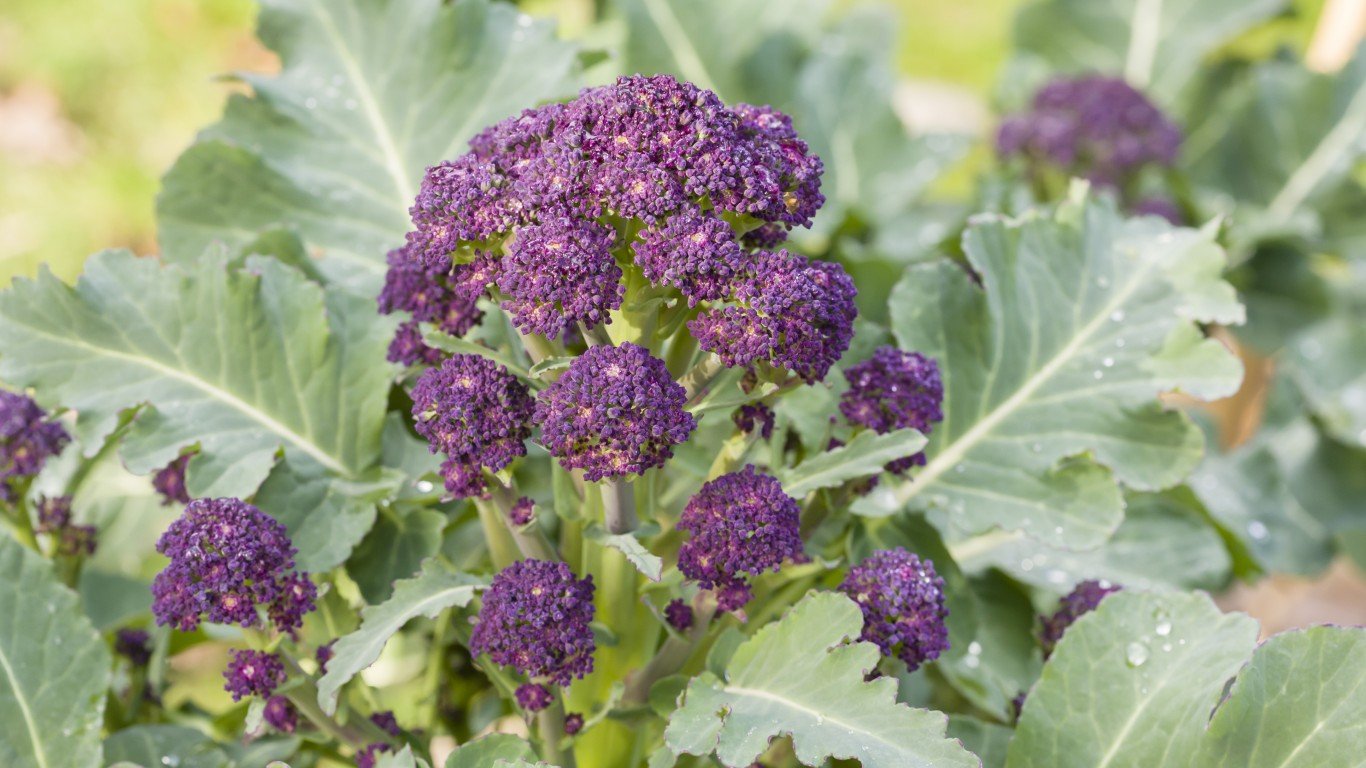
7. Brassicas
> GHG emissions in kg of CO2 equivalents per kg of food: 0.5
> GHG emissions in kg of CO2 equivalents per nutritional unit: 0.5 per 1 kg (11 lowest)
> Land use in sq meters per kg of food: 0.6 (2nd lowest)
> Freshwater withdrawal in liters per kg of food: 119.4 (13 lowest)
Brassicas, also called cruciform vegetables, are plants in the cabbage and mustard family (Brassicaceae). Among its varieties are kale, collards, cabbage, cauliflower, broccoli, Brussels sprouts, kohlrabi, turnips, bok choy, and choy sum. Kale and collards are on the Environmental Working Group’s “Dirty Dozen,” meaning that they retain high pesticide residue. Cabbage and cauliflower, on the other hand, are on the “Clean Fifteen.”
[in-text-ad-2]
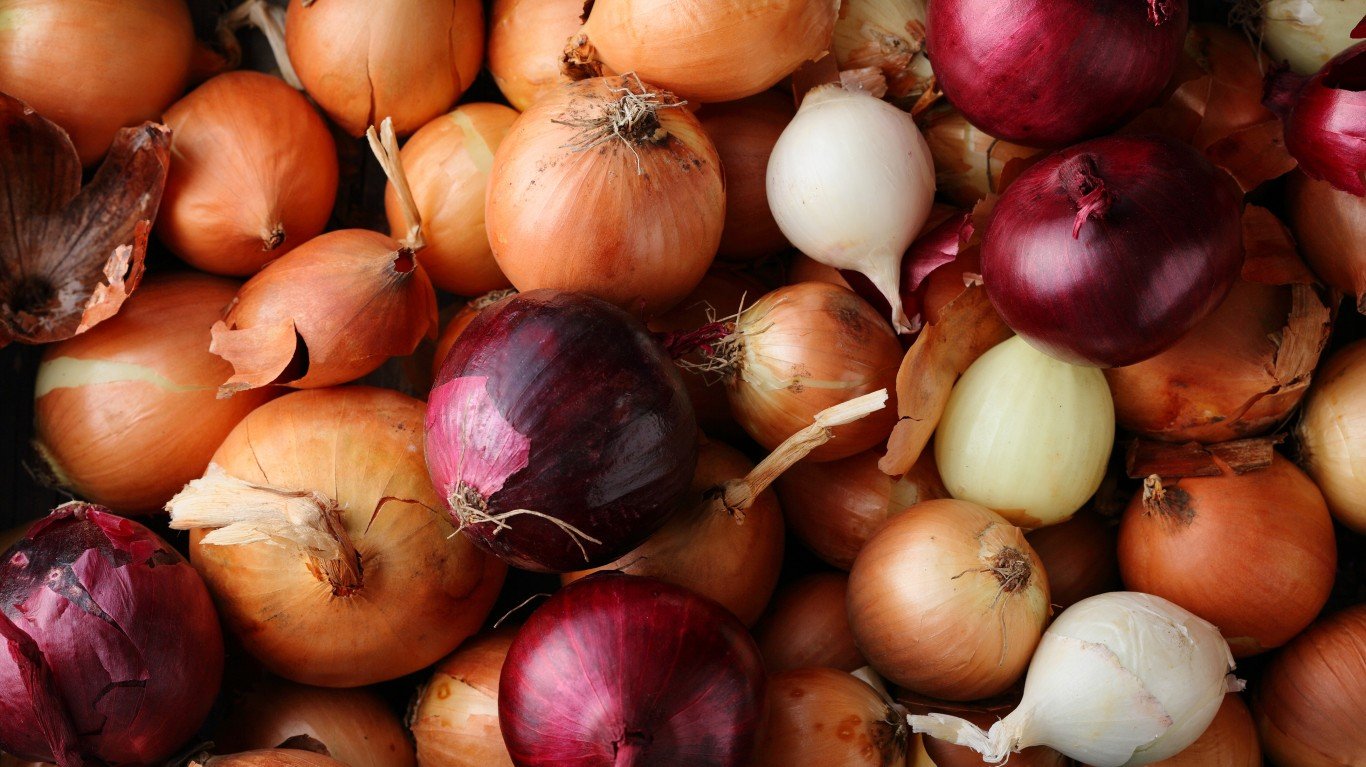
6. Onions & Leeks
> GHG emissions in kg of CO2 equivalents per kg of food: 0.5
> GHG emissions in kg of CO2 equivalents per nutritional unit: 0.5 per 1 kg (10 lowest)
> Land use in sq meters per kg of food: 0.4 (4th lowest)
> Freshwater withdrawal in liters per kg of food: 14.3 (3 lowest)
Onions and leeks both add flavor to cooking, with leeks providing a mild taste than sweet or pungent onions. Both are members of the Allium family, like garlic. Leeks are a cold resistant crop and can withstand many frosts. Dry onions can be stored for long periods. Onion production is relatively sustainable, with less impact on the water, air, land, and soil.
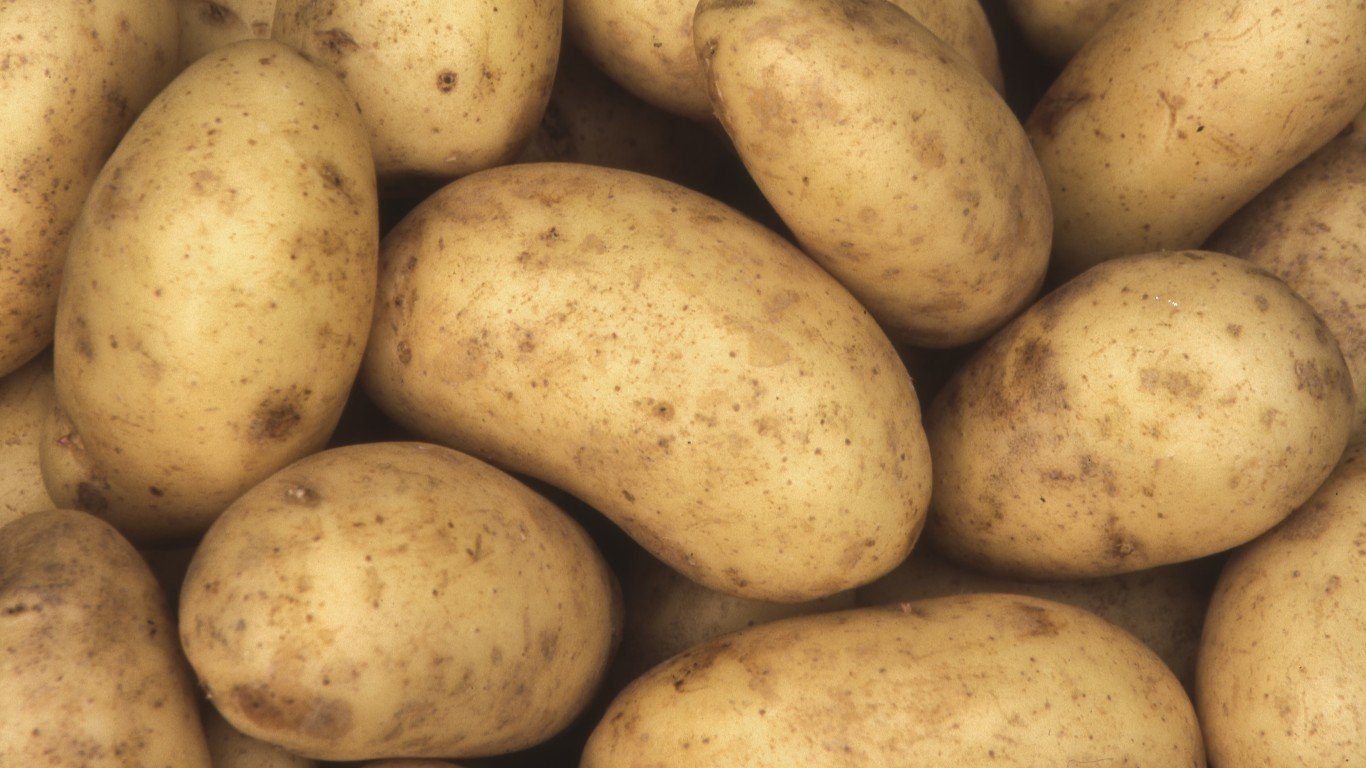
5. Potatoes
> GHG emissions in kg of CO2 equivalents per kg of food: 0.5
> GHG emissions in kg of CO2 equivalents per nutritional unit: 0.6 per 1 kg (14 lowest)
> Land use in sq meters per kg of food: 0.9 (3rd lowest)
> Freshwater withdrawal in liters per kg of food: 59.1 (8 lowest)
Americans can’t get enough potatoes! According to the U.S. Department of Agriculture, nearly 50 pounds of potatoes were available to be eaten per person in 2019. How good potatoes are for the environment is a subject of debate. One study out of England said the spuds have less environmental impact than pasta and rice. However, potatoes do use pesticides in production, so that is something to consider when munching on a french fry.
[in-text-ad]
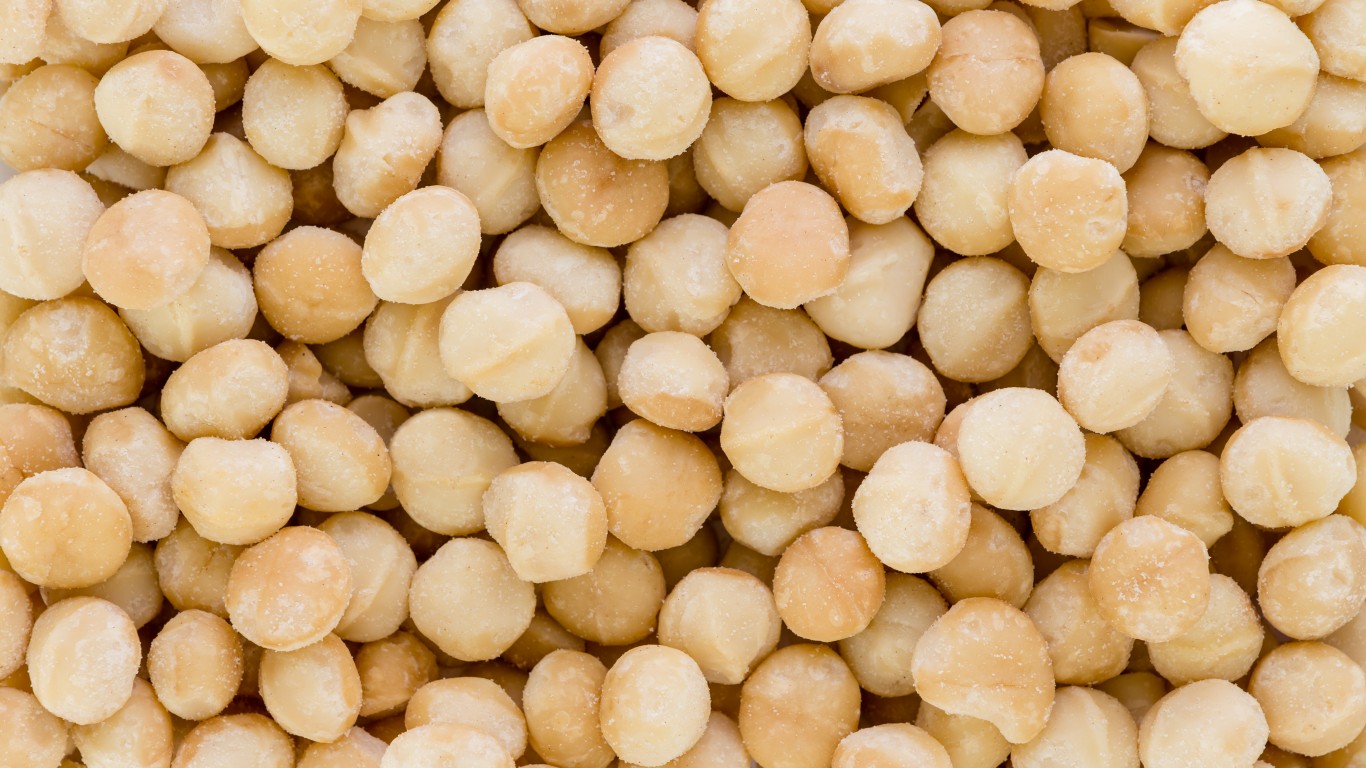
4. Nuts
> GHG emissions in kg of CO2 equivalents per kg of food: 0.4
> GHG emissions in kg of CO2 equivalents per nutritional unit: 0.3 per 100 g protein (3 lowest)
> Land use in sq meters per kg of food: 13.0 (11th highest)
> Freshwater withdrawal in liters per kg of food: 4,133.8 (2 highest)
Nuts are classified as dry, single-seeded fruits with a high oil content. Strictly, speaking, chestnuts, hazelnuts, pecans, and walnuts are nuts while peanuts are actually legumes. Packed with protein, nuts generally have a lower carbon footprint than animal-based protein. Macadamia nuts, hazelnuts, and brazil nuts are a more sustainable crop than almonds, which use a lot of water to grow.
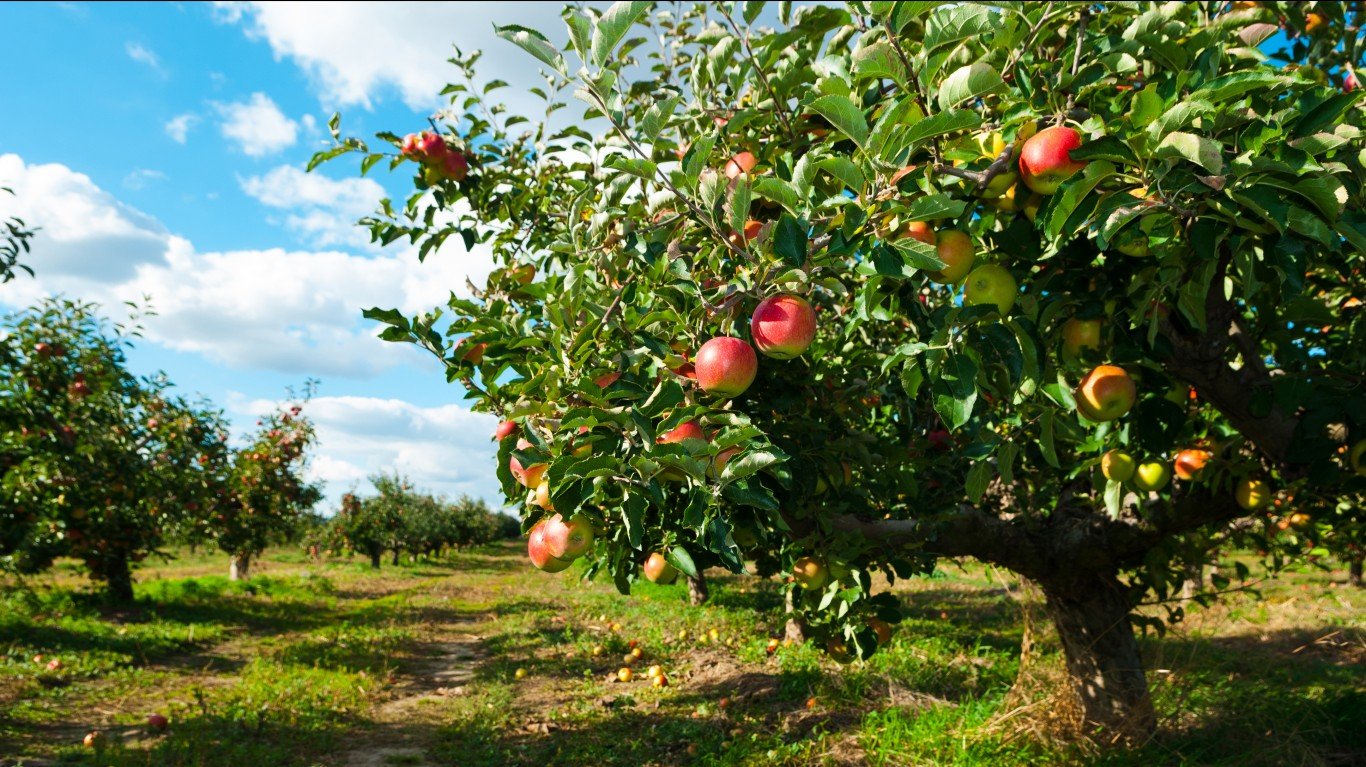
3. Apples
> GHG emissions in kg of CO2 equivalents per kg of food: 0.4
> GHG emissions in kg of CO2 equivalents per nutritional unit: 0.4 per 1 kg (8 lowest)
> Land use in sq meters per kg of food: 0.6 (1st lowest)
> Freshwater withdrawal in liters per kg of food: 180.1 (16 lowest)
Apples are vulnerable to pests, fungal infections, and bacterial diseases, so pesticides are used in their production. However, organic or “low-spray” apples are readily available today. Apples grown in the state of Washington, where drier conditions make it possible to grow them chemical-free, are another alternative.
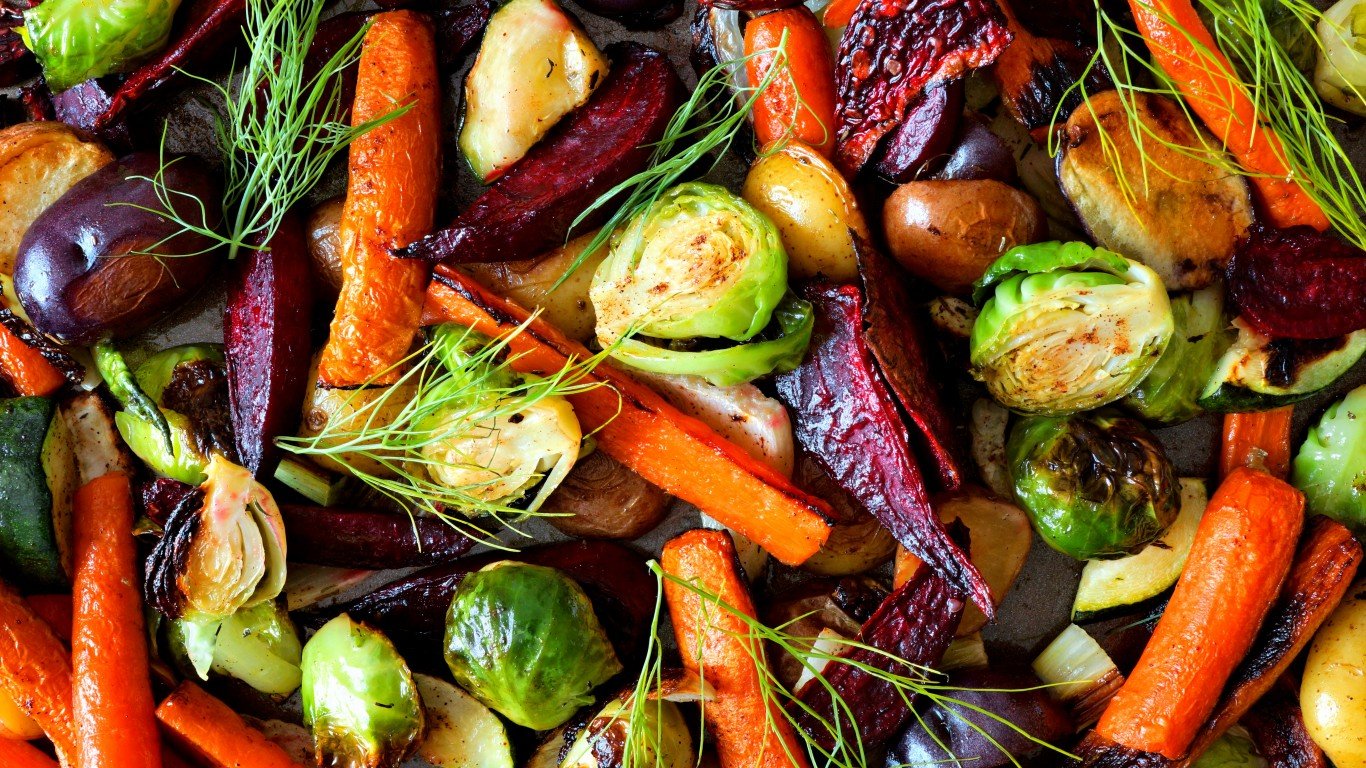
2. Root Vegetables
> GHG emissions in kg of CO2 equivalents per kg of food: 0.4
> GHG emissions in kg of CO2 equivalents per nutritional unit: 0.4 per 1 kg (8 lowest)
> Land use in sq meters per kg of food: 0.3 (9th lowest)
> Freshwater withdrawal in liters per kg of food: 28.4 (7 lowest)
Potatoes, carrots, and onions are examples of root vegetables that sprout from the earth. Root vegetables can be low in calories, but high in carbohydrates. For instance, a baked russet potato contains 37 grams of carbs compared to 12 grams in a cup of chopped raw carrots.
[in-text-ad-2]
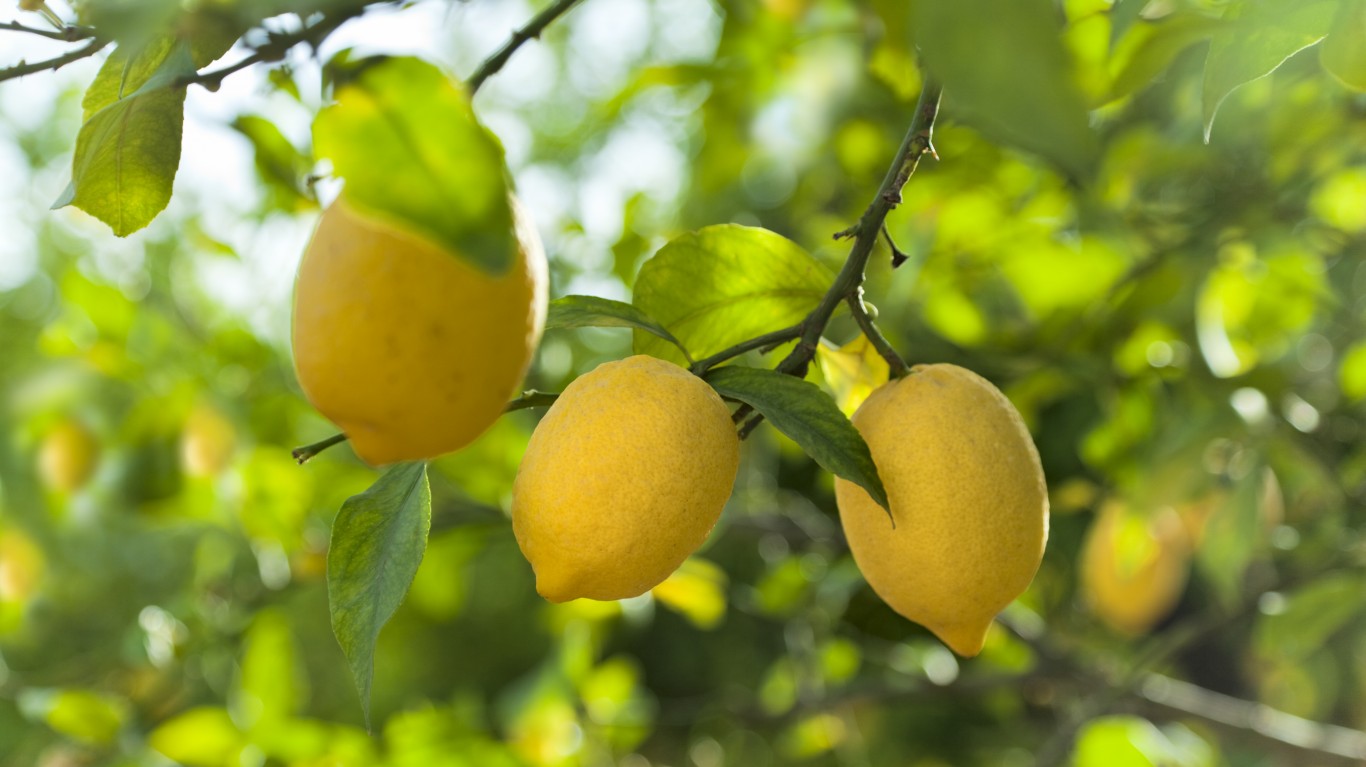
1. Citrus Fruit
> GHG emissions in kg of CO2 equivalents per kg of food: 0.4
> GHG emissions in kg of CO2 equivalents per nutritional unit: 0.4 per 1 kg (5 lowest)
> Land use in sq meters per kg of food: 0.9 (5th lowest)
> Freshwater withdrawal in liters per kg of food: 82.7 (10 lowest)
Citrus fruits can either be sweet (oranges, grapefruits) or tangy (limes, lemons). Grown on flowering trees or shrubs, citrus needs a lot of water to produce. It’s best to buy and consume citrus fruits during the peak winter season for less environmental impact.
Sponsored: Want to Retire Early? Here’s a Great First Step
Want retirement to come a few years earlier than you’d planned? Or are you ready to retire now, but want an extra set of eyes on your finances?
Now you can speak with up to 3 financial experts in your area for FREE. By simply clicking here you can begin to match with financial professionals who can help you build your plan to retire early. And the best part? The first conversation with them is free.
Click here to match with up to 3 financial pros who would be excited to help you make financial decisions.
Thank you for reading! Have some feedback for us?
Contact the 24/7 Wall St. editorial team.
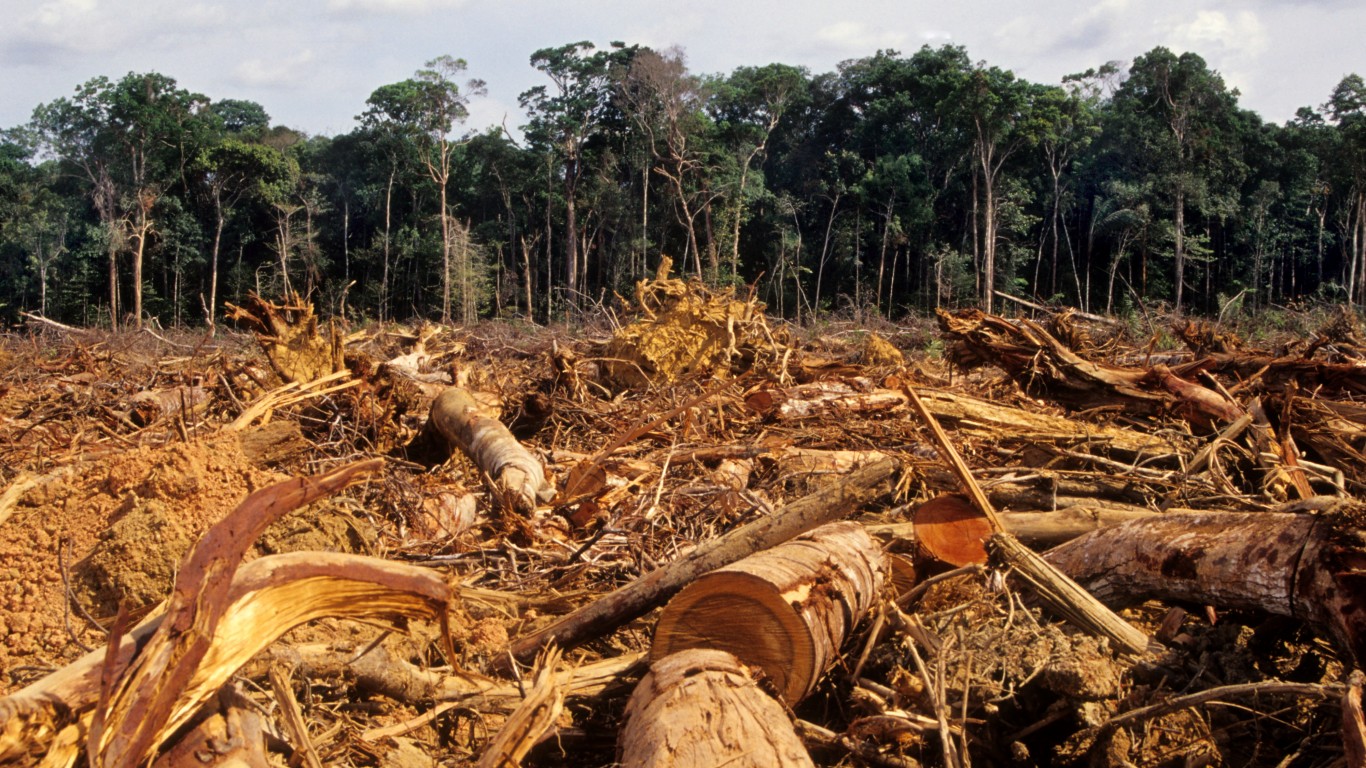 24/7 Wall St.
24/7 Wall St.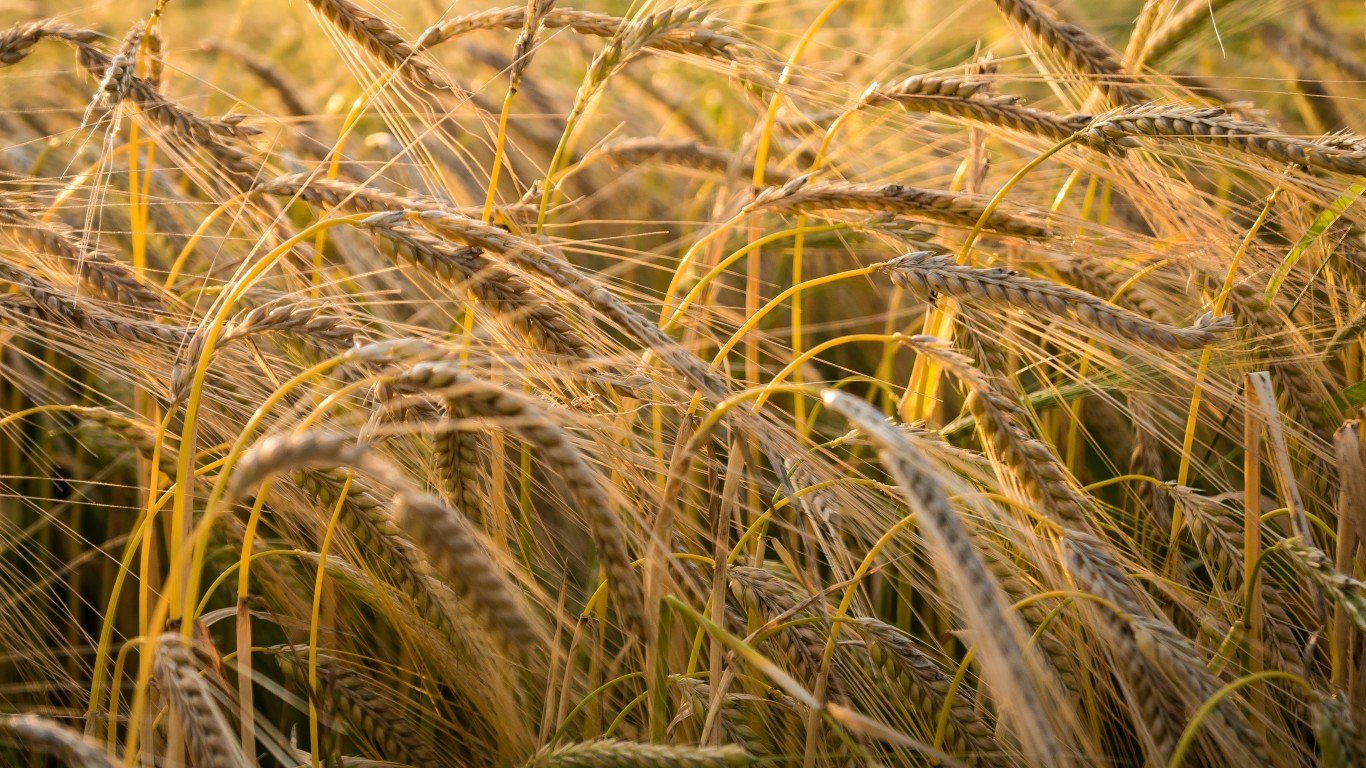
 24/7 Wall St.
24/7 Wall St.


